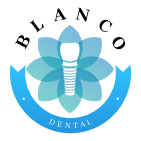Advantages of metal-ceramic dental restoration
Dentists identify two main approaches to tooth restoration: direct and indirect. The indirect method involves creating an artificial dental prosthesis, which is a traditional way of restoring teeth.
Removable dental prostheses are used for partial or full restoration of the dental arch and are particularly popular among older adults. These prostheses can be made from plastic or metal alloys. There are also fixed prostheses, which include four main categories: implants, bridges, microprosthetics, and crowns.
Tooth restoration can be performed directly in the patient’s mouth, which is an advancement of modern medicine that actively uses the latest technologies. However, this procedure requires specialists to have deep knowledge of tooth anatomy and skills in working with modern materials.
Metal-ceramic restoration is the most popular type of fixed prosthodontics. In this method, a metal framework is created, onto which a thin layer of ceramic is applied, and then the structure is fired. This method is versatile, as it is suitable for both restoring completely destroyed teeth and creating bridge prostheses.
Metal-ceramic dental prostheses have a lifespan of around 10 years and are characterized by a low level of microbial plaque accumulation, which contributes to the durability of the structure.
Additionally, metal-ceramic crowns do not cause allergic reactions, such as redness, swelling, or bleeding of the gums. The tooth under the crown remains alive, as special treatments prevent inflammatory processes.


